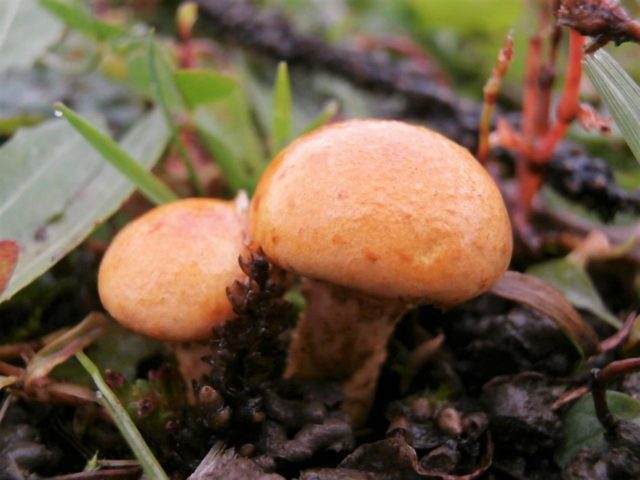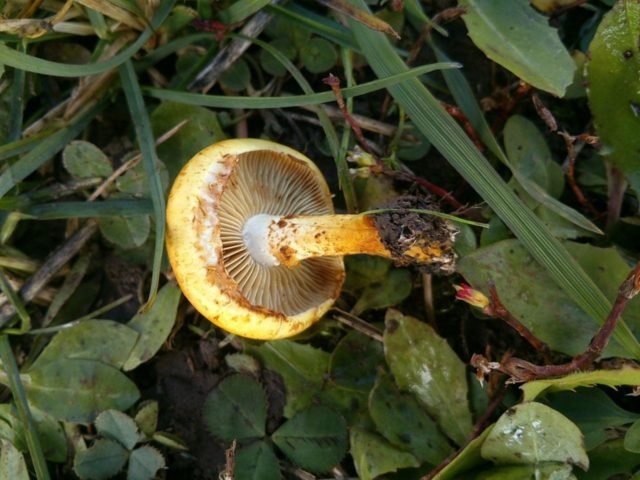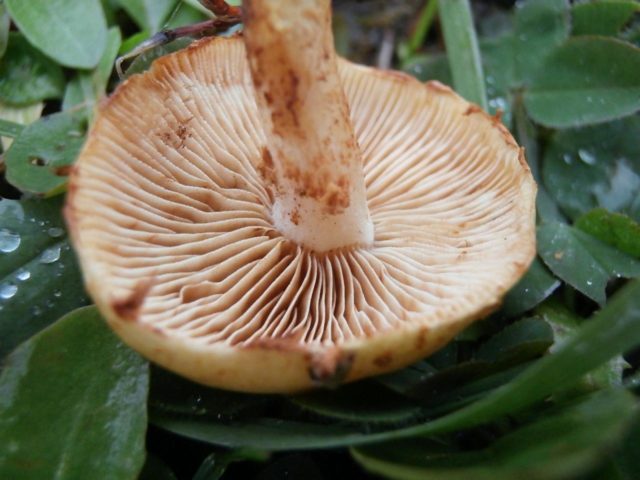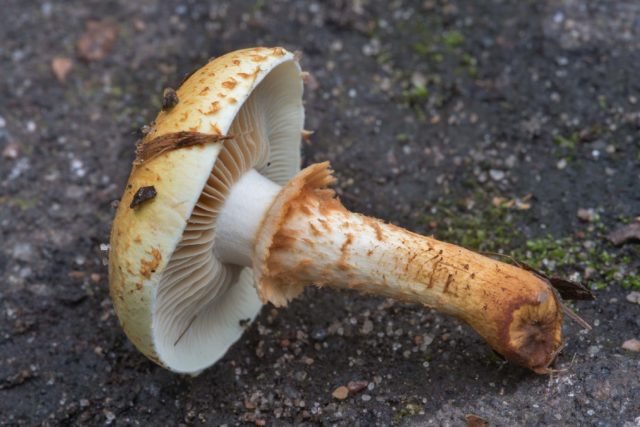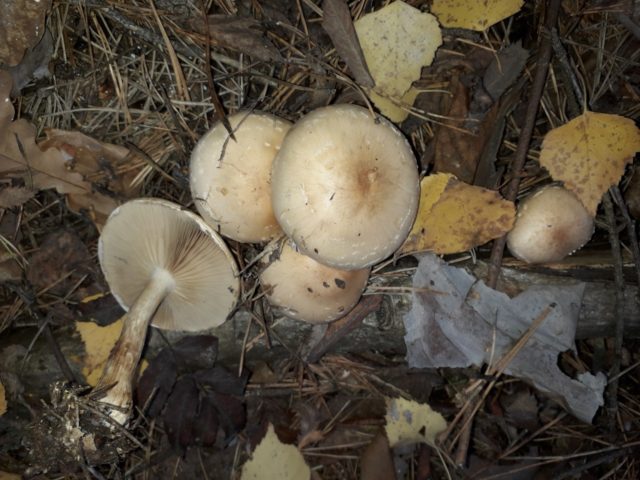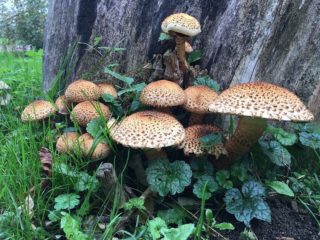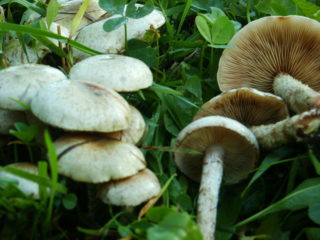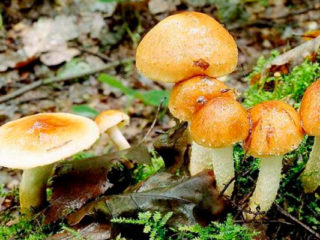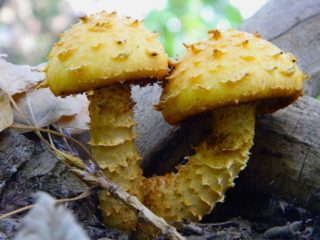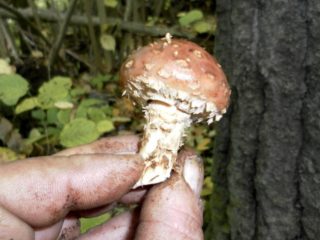Content
The lamellar mushroom belongs to the Stropharia family. Luminous scales are known under several names: Flammula devonica, Dryophila lucifera, Agaricus lucifera, as well as sticky scales and sticky foliota. The fruit body is free of toxins, but the bitter taste makes the mushroom unsuitable for food.
What does glowing flake look like?
The color of the fruiting body of luminous scales depends on the place of growth, the degree of illumination and the stage of development. It happens light yellow, lemon brown with an orange tint. The color is solid or with a darker spot in the center and light edges on the cap.
Description of the hat
The shape of the cap in young specimens is convex, spherical; as the fungus ages, it becomes prostrate with concave edges.
External characteristic:
- the average diameter of an adult luminous scale is 5-7 cm;
- the surface of young specimens is covered with small elongated red-brown scales, which completely crumble during the growth of the cap;
- the film coating is slippery, sticky;
- along the edge there are torn remnants of a fringed bedspread;
- the plates are weakly fixed in the lower part, they are located rarely. The edges are wavy, at the beginning of growth they are light yellow, and in mature mushrooms they are brown with dark spots.
The pulp is dense, beige, with a yellow tint, fragile.
Leg description
The leg is even, slightly thickened at the base, grows up to 5 cm.
The structure is dense, solid, rigid. On the upper part, there are uneven fragments of the bedspread in the form of a ring. The part near the cap is smooth, light. At the base, it is dark, closer to the ring, the surface is covered with flocculent soft and fibrous particles.
Is the mushroom edible or not
Luminous scales are included in the group of inedible mushrooms. The species is not poisonous, but the taste of the fruiting body is very bitter. It is impossible to get rid of bitterness in any way of processing. The smell is not expressed, slightly sweetish, reminiscent of a flower.
Where and how it grows
Glowing flake grows in coniferous, mixed and deciduous forests. It settles in groups on rotten leaf litter, open paths, and wood residues. The fruiting period is long - from mid-July to the onset of frost. In Russia, the main aggregation of the species is in the Central and Southern regions.
Widely distributed in:
- Europe;
- Australia;
- Japan;
- South America.
Doubles and their differences
Externally, the luminous clay-yellow flake looks like a flake.
The color of the double's cap is much lighter, there is a slight bulge in the center of a dark color. The protective film on the surface is slippery with a rare scaly coating. Spore-bearing plates at any age are light beige.
Conclusion
Glowing scales are an inedible mushroom that bears fruit from July to October in the Central and Southern regions.There are no toxic compounds in the chemical composition, but the bitter taste makes it unsuitable for processing. Grows in all types of forests, in the shade of trees and in open areas.
